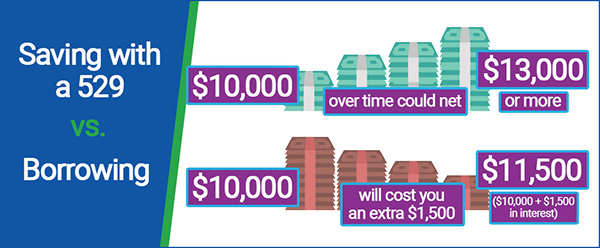
(October 14, 2021) Fall is the time when most students are starting a new school year. Yet, even with that annual reminder that their kids are creeping closer and closer to a future after high school, most parents continue to put off planning for the looming expense.
Of course, right now, when loan interest rates are low and money is cheap, it may be easy to say “I don’t need to save. I’ll just take out a loan when the time comes.” After all, those 43 million Americans owing an average of $36,000 EACH in student loans can’t be wrong! However, a little simple math proves why relying exclusively on student loans probably isn’t a great idea.
First, money may not always be cheap. News flash: interest rates are subject to change. By the time your child is ready to enroll in college, enter trade school or begin their apprenticeship, that 3.73% rate being offered today for a federal subsidized loan could be double or triple that amount or even more.
But even if interest rates hold true, it’s still much more expensive to borrow than it is to save. Let’s work it out.
According to EducationData.org, the average cost of a year of public in-state tuition in the United States today is $9,580. That’s for tuition alone, not including fees, room & board, books, supplies, or additional expenses. If you start saving $100 a month while your child is young and put it into your bank-offered savings account paying 0.1% interest, it will take you just under eight years to accumulate enough money to pay for that year of college. If you invest in a 529 account with say, a 5% average rate of return, you’ll reach your goal about a year sooner.

Stated more simply, saving $10,000 will require you to set aside $100 a month for 100 months, or just over eight years. And depending on your rate of return, that $10,000 in a 529 account could net you as much as $13,000 or more. On the other hand, borrowing the same $10,000 at today’s interest rates will require a higher monthly payment for about the same amount of time, and cost you an additional $1,500 in interest. What sounds better: saving $10,000 to end up with $13,000, or paying more than $11,500 to get $10,000?
While there are many investment choices out there, a 529 plan can provide the best combination of security, potential for investment returns, and tax benefits. Nearly every state in the U.S. offers at least one, and some states, including Washington state, even offer prepaid plans, in which you can pre-purchase future tuition at a predetermined rate today.
By Rodger O'Connor
WA529 Associate Director for Marketing and Communications
